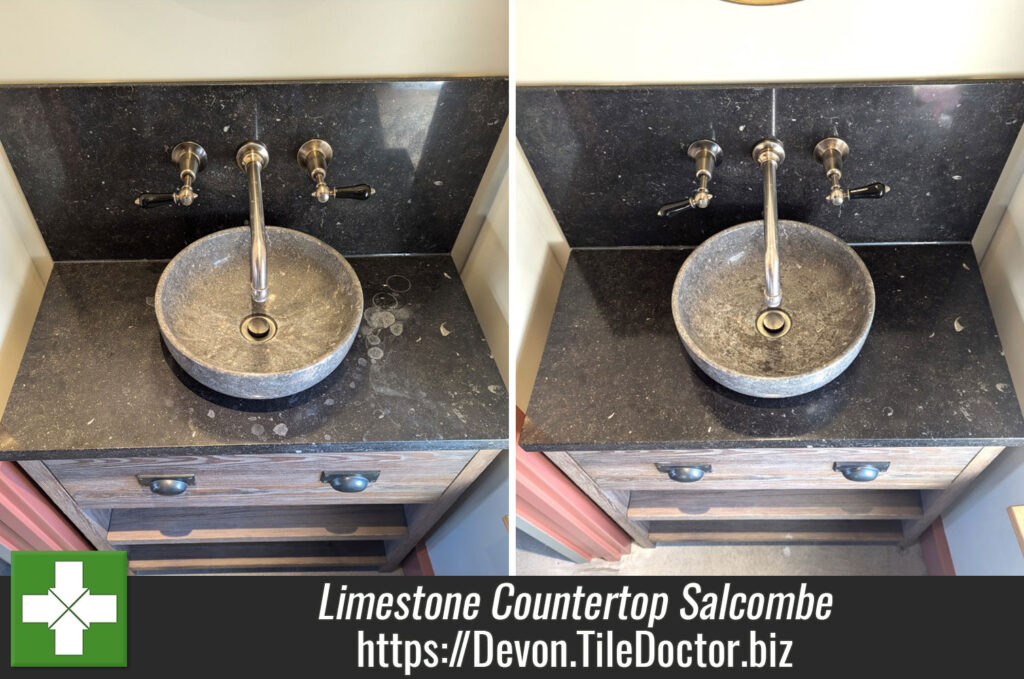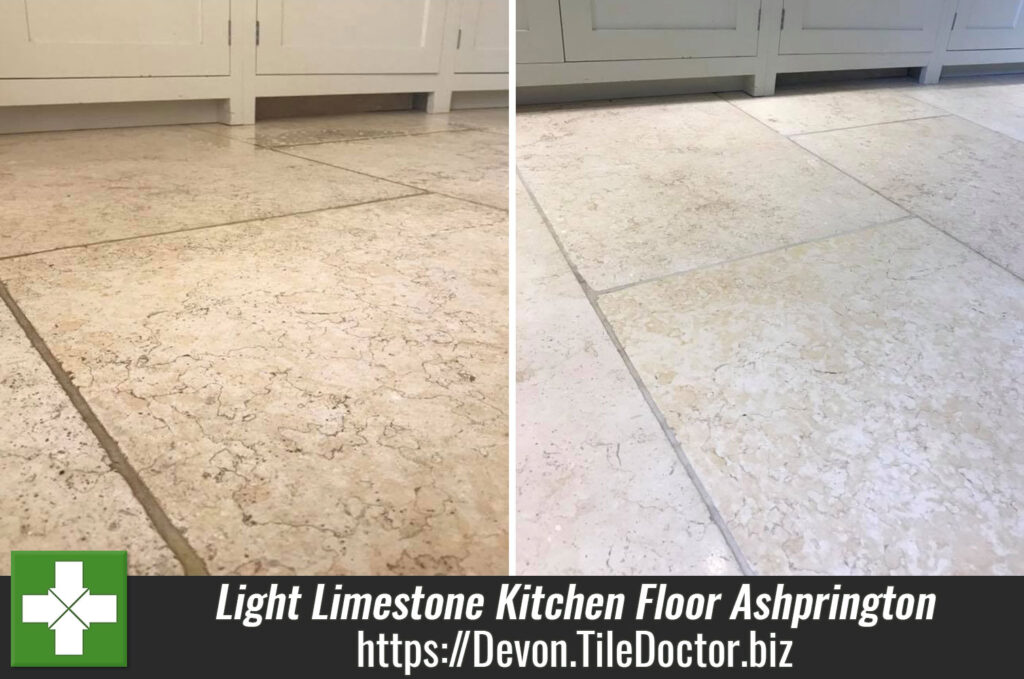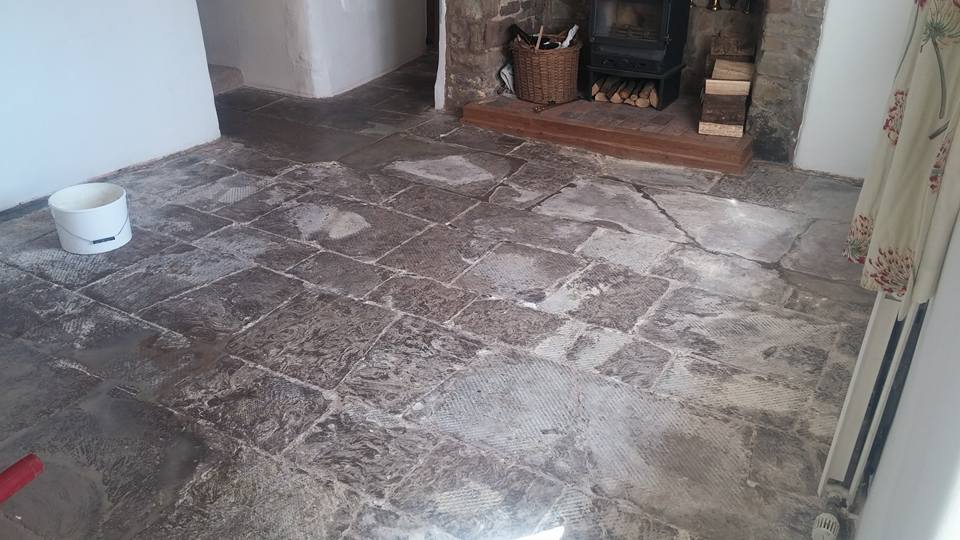Stained Limestone Countertop Renovated in Salcombe Holiday Rental
I received an enquiry from a client with a property in Salcombe with an expensive Blue Lias limestone countertop in the bathroom. The property was let out to holiday makers and a previous guest had stained the work surface. From the pictures I could tell that the stone had been damaged by an acid-based product which had been left on the stone for too long and had etched the surface.
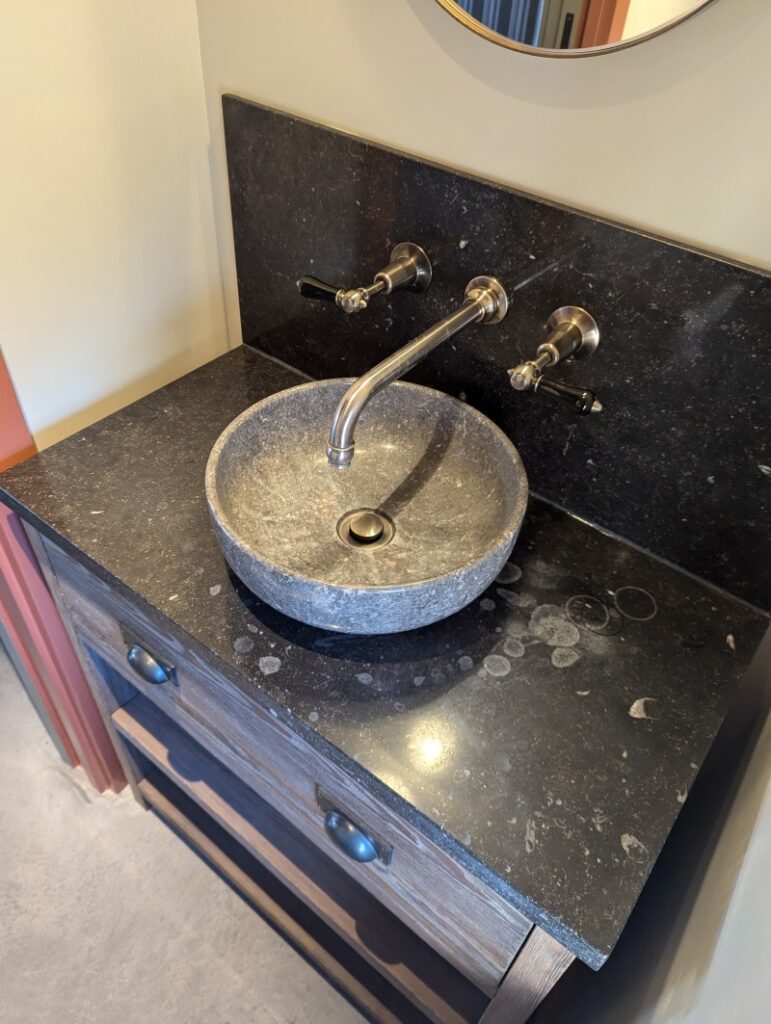
Limestone is an acid sensitive stone, so you must be careful what products are used to clean it. Strong cleaning products should be avoided as they will mark the surface, if in doubt check the label for compatibility or purchase a purpose made cleaner such as Tile Doctor Stone Patina Spray
Given the property was a holiday let, they wanted this work carried out during changeover before the next set of guests arrived. Fortunately, it was a small job and after a slight shuffle I was able to squeeze it in between other jobs.
I’ve worked on these issues before so after reviewing the pictures I was able to give them a price that included the necessary materials. Happy with that I was given instructions on how to access the property and the work was scheduled.
Polishing Marks out of a Limestone Countertop
Work began with polishing to remove the deep etching from the countertop. To do this, Tile Doctor Handheld Diamond burnishing blocks were applied to the stone with a little water for lubrication. This started with a coarse 200-grit and then followed up with a 400-grit until all the signs of the white etching had gone. The countertop was wiped clean after each block was applied to remove the small amount of slurry that the process generates.
I then started with a handheld polishing machine fitted with Tile Doctor 6-inch Burnishing Pads working right the way through the system of 400-grit, 800-grit, 1500-grit and 3000-grit. Again, water was used to lubricate, and the resultant slurry was removed after each pad.
Once I was happy, I had burnished out all scratches and brought up the polished appearance of the limestone the stone was dried with a heat gun.
Sealing a Limestone Wash Basin Countertop
Once dry the limestone countertop was sealed with two thin coats of Tile Doctor X-Tra Seal which enhanced the dark colours and fossils in this Blue Lias stone. This product is an impregnating sealer that is rated for external use and so an ideal choice for a countertop that might get wet. To finish the job off the stone was buffed using a 6-inch White buffing pad over the surface with the polishing machine to heighten the polished finish that little bit more.
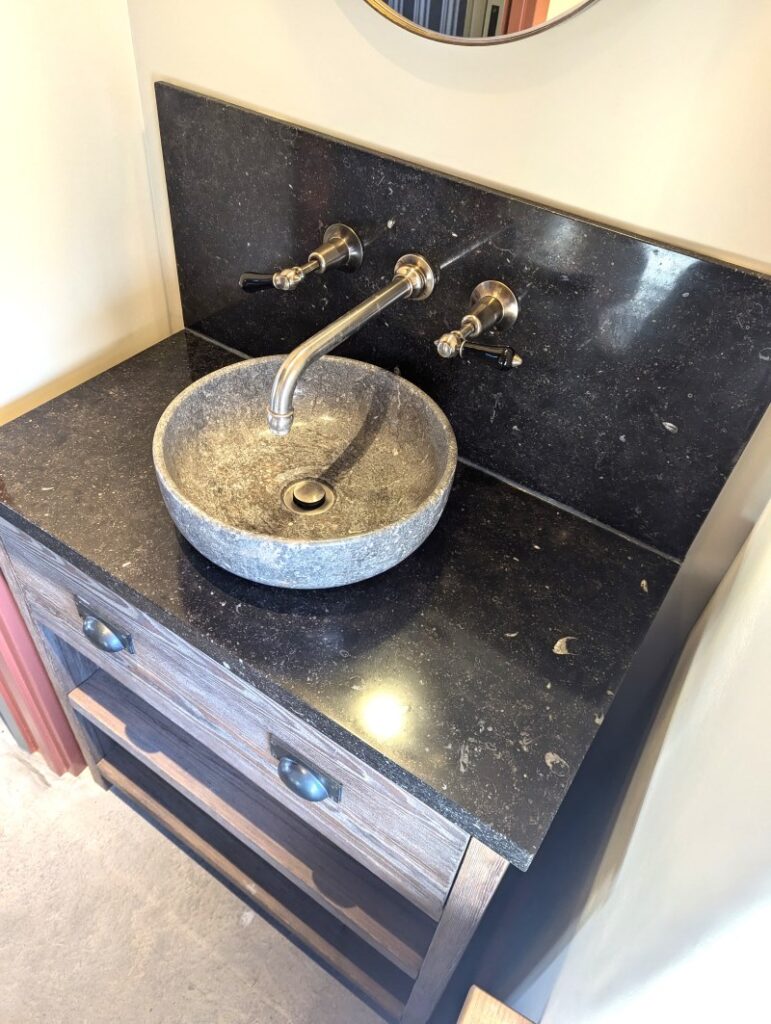
The owner of the property was delighted with the results and happy that her guests who were due to arrive the following morning wouldn’t encounter the stained limestone in an otherwise 5-star setting.
Professional Renovation of a Stained Limestone Countertop in Devon
Stained Limestone Countertop Renovated in Salcombe Holiday Rental Read More »

